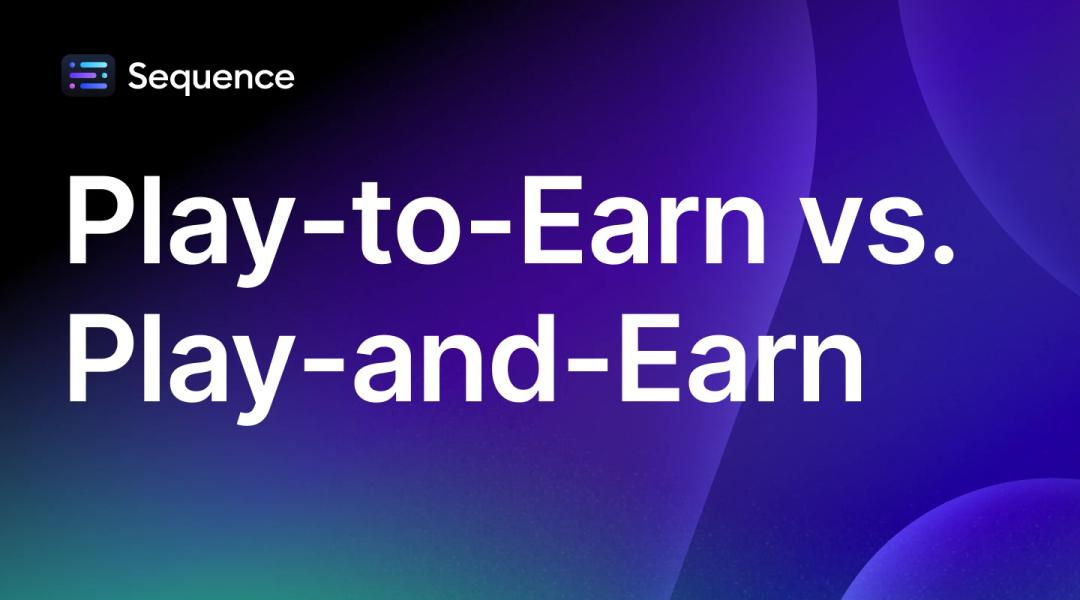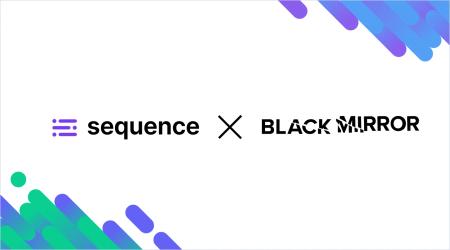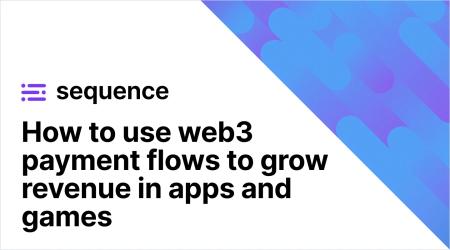Play-to-Earn vs. Play-and-Earn in web3 gaming
February 5 2025

The rise of web3 gaming has introduced new ways for players to engage with games, particularly through the concepts of Play-to-Earn (or P2E) and Play-and-Earn. While these models both allow players to earn real value through gameplay, there are fundamental differences in their philosophy and execution that impact how games are designed and played.
In the early days of blockchain gaming, P2E became a popular model where earning financial rewards was often the main driver for player participation. However, this has led to a shift in thinking, with many in the industry advocating for a Play-and-Earn model, where the core emphasis is on gameplay, fun, and player engagement. Earning potential would then become a secondary benefit.
We already addressed the distinction between P2E and Play-to-Own. Understanding the difference between P2E and Play-and-Earn is also critical for web3 developers.
By the end of this article, you will have a clear grasp of how these models differ, why Play-and-Earn is becoming more popular, and what this means for the future of blockchain gaming.
Key takeaways
- Play-and-Earn vs. Play-to-Earn: Play-and-Earn focuses on fun and engagement first, with earning as a secondary option. Play-to-Earn places financial rewards at the forefront of the gaming experience.
- Sustainability: The Play-and-Earn model creates a more balanced and long-lasting gaming ecosystem by making earning optional and keeping the primary focus on gameplay.
- Opt-in earning systems: Features like battle passes, inspired by web2 gaming, allow players to choose to earn rewards while keeping gameplay enjoyable for the majority of players.
- Competitive play for rewards: Ranking systems and leaderboards offer top-tier players a chance to earn rewards, creating a space for competition without alienating casual players.
- Sequence web3 gaming stack: Sequence helps developers build seamless Play-and-Earn games, integrating blockchain technology effortlessly so players can focus on having fun.
What is Play-to-Earn?
P2E is a gaming model where the primary motivation for players is to earn real-world value through in-game activities. Typically powered by blockchain technology, these games allow players to earn cryptocurrency or valuable digital assets, often represented as NFTs, that can be traded or sold on external marketplaces.
In a P2E system, earning becomes the main incentive for players, which has driven many games in this category to focus heavily on monetization and financial rewards rather than gameplay.
The P2E model has its roots in decentralized economies, offering players a unique opportunity to earn while playing, but this can shift the focus away from enjoying the game itself. For some, this model risks turning games into work, where participation feels more like a job than a form of entertainment.
Examples of P2E games are Axie Infinity and Pegaxy.
What are the pitfalls of Play-to-Earn?
While P2E opened up new possibilities for player engagement in web3 gaming, it comes with significant challenges. One of the main pitfalls is that when earning becomes the primary motivator, games can lose their sense of fun and creativity. Players may begin to view the game as a job, focused solely on the financial rewards, which can detract from the overall enjoyment and immersion.
This shift in mindset can lead to a transactional relationship with the game, where players only log in to earn tokens or NFTs, ultimately causing the game to lose its appeal over time.
Additionally, P2E games often struggle with sustainability. If the economic model of the game is not carefully managed, the value of in-game rewards can become inflated or devalued, leading to player dissatisfaction and reduced participation. Games built on P2E principles can also face challenges in attracting casual gamers, as many may be put off by the idea of needing to "grind" for rewards rather than playing for fun.
What is Play-and-Earn?
Play-and-Earn represents a shift in philosophy within web3 gaming, where the primary focus is on the enjoyment and engagement of the game itself, and earning becomes a potential secondary benefit.
In this model, games are designed first and foremost to be fun and engaging, ensuring that players are motivated by the gameplay experience rather than financial incentives. While earning opportunities still exist, they are not the primary driver for most players.
This approach creates a more balanced gaming environment where the majority of players participate purely for entertainment, much like in traditional games. Only a subset of players, often those who invest more time or reach higher skill levels, will actively engage with the earning components.
Examples of fun-first games with web3 elements include Ubisoft’s Champions Tactics and Big Time.
Why Play-and-Earn is more sustainable
The Play-and-Earn model offers a more sustainable and player-friendly approach to game design compared to P2E.
By focusing on the enjoyment and engagement of the game itself, developers create experiences that are likely to retain a larger audience over time. When the primary goal is to make the game fun, players will keep coming back because they genuinely enjoy playing—not because they are motivated by earning potential. This reduces the risk of "burnout" that can happen in P2E games, where players might start to see the game as a job.
A key parallel can be drawn with eSports in traditional web2 gaming. In eSports, the majority of players engage with games like League of Legends or Fortnite purely for fun, with no expectations of financial rewards. Only a small percentage of elite players compete in tournaments for cash prizes. This dynamic fosters healthy, thriving communities where the game remains enjoyable for the masses, while still allowing a competitive space for those who want to take it further.
The Play-and-Earn model can emulate this balance, giving developers the chance to create long-lasting games with vibrant communities. The opportunity to earn remains present, but it’s positioned as an extra layer for those who wish to invest more time and effort, rather than the central motivation.
This makes the ecosystem more resilient to fluctuations in token prices or the economy, which can heavily impact P2E games that are overly reliant on financial incentives to keep players engaged.
Future trends in Play-and-Earn games
A key trend emerging in Play-and-Earn games is the introduction of opt-in earning systems that give players the choice to engage with rewards without disrupting the core gaming experience.
One successful model, borrowed from traditional web2 games, is the use of battle passes. In this system, players can choose to purchase a battle pass or a premium version, which unlocks access to exclusive rewards or items, like FPS Off The Grid recently did.
This approach allows earning to be a supplementary feature that enhances gameplay for those who want it while keeping the primary focus on fun for the rest of the player base.
Another trend to watch is the use of ranking systems and competitive play to reward top-tier players, like in Captain Laserhawk: The G.A.M.E. By implementing leaderboards, games can offer additional rewards to the top percentage of players, creating a competitive environment where the most dedicated or skilled participants have the opportunity to earn.
This mirrors traditional web2 competitive structures, where most players engage for fun, while a subset of the best players can access tournaments, leaderboards, or ranked leagues with cash prizes or rewards. This approach not only preserves the fun for casual gamers but also incentivizes more serious players to strive for the top, aligning with the Play-and-Earn philosophy.
How can Sequence support developers in building Play-and-Earn games
If you’re a developer looking to build engaging web3 games where gameplay comes first, Sequence can help. With Sequence’s seamless integration of blockchain technology, you can focus on creating fun and immersive experiences without the complexity of blockchain getting in the way.
Our web3 stack allows you to easily incorporate opt-in earning systems like battle passes or competitive leaderboards, ensuring that your players enjoy the game while still having opportunities to earn if they choose.
Ready to bring your Play-and-Earn vision to life? Explore Sequence web3 game development platform and build games that captivate and reward your community effortlessly.
Sequence makes building onchain simple. Developers and teams can launch, grow, and monetize apps with unified wallets, 1-click cross-chain transactions, and real-time data, all in a modular and secure stack. No more stitching together fragmented tools or battling poor user flows. Sequence is production-ready infrastructure that helps teams ship faster, onboard more users, and scale confidently. From chains and stablecoins to DeFi and gaming, Sequence powers developers and applications across the EVM ecosystem with billions in transaction volume and millions of users. Trusted by leaders in blockchain, Sequence powers today’s onchain apps and delivers future-proof infrastructure for tomorrow’s breakthroughs. Learn more at sequence.xyz.
Written by

Sequence team
Sequence logoRelated Posts

A short guide that explains exactly what gasless transactions are, and why they matter for your web3 experience.

In partnership with KOR Protocol, Sequence and Msquared, Black Mirror's franchise has launched the $MIRROR token and a new web3 experience!

Web3 payment flows allow any app to embed onchain purchases and interactions in a way that feels natural for users. Learn more about them!

As more applications and protocols move onchain, indexers redefine how dev teams access, organize, and use blockchain data. Learn how!
